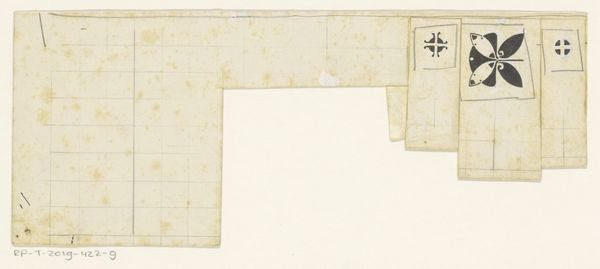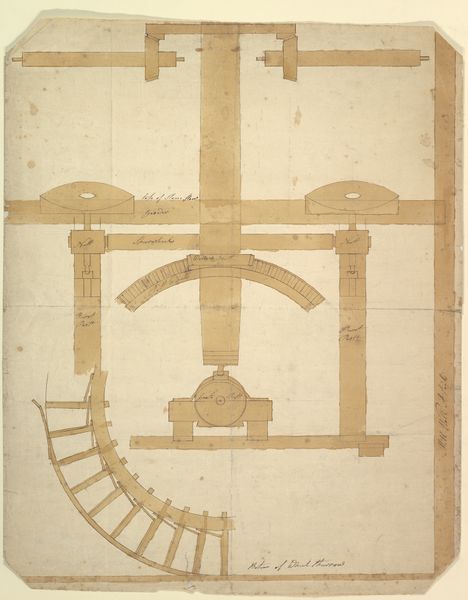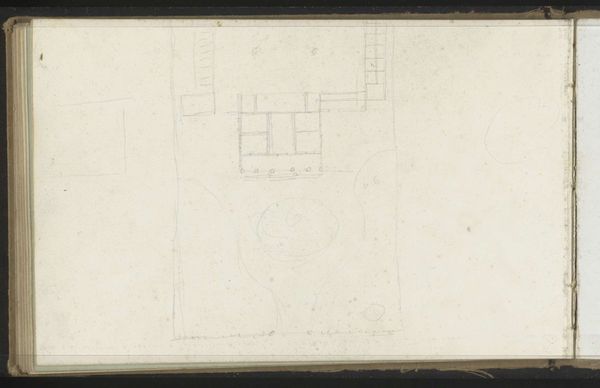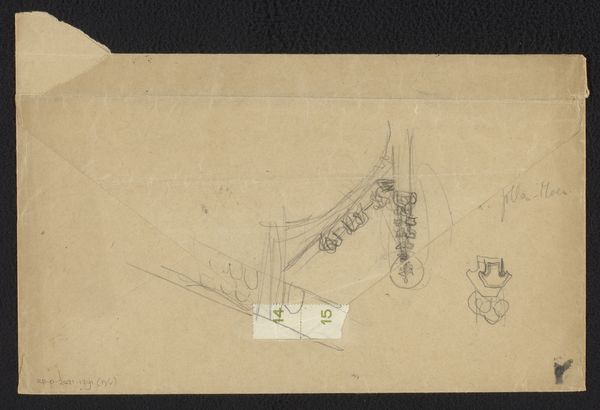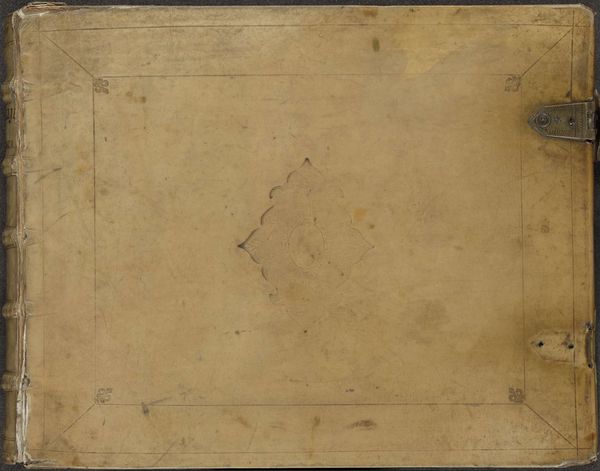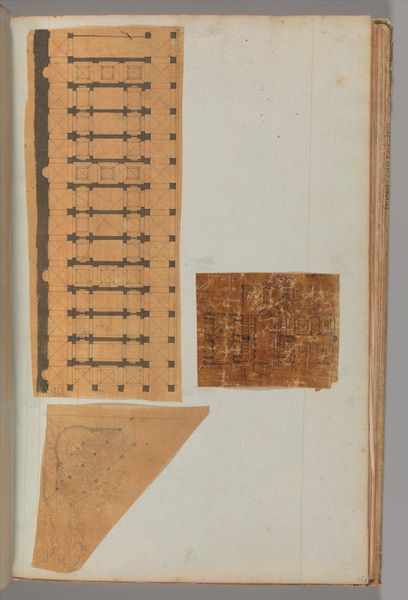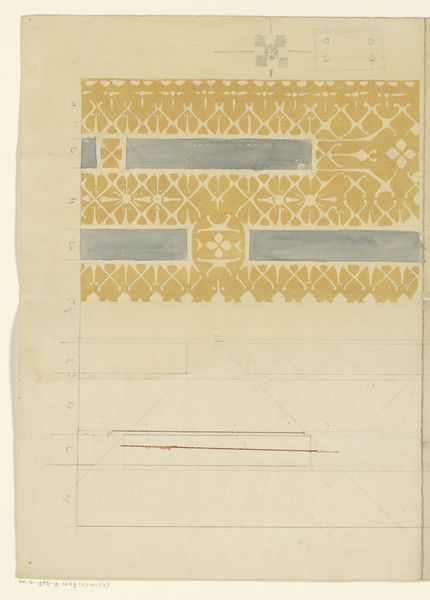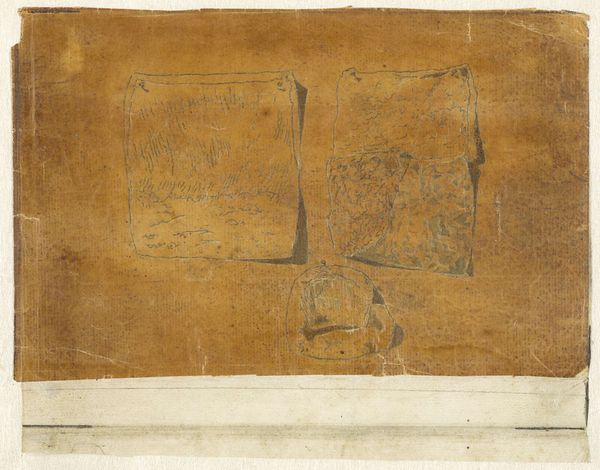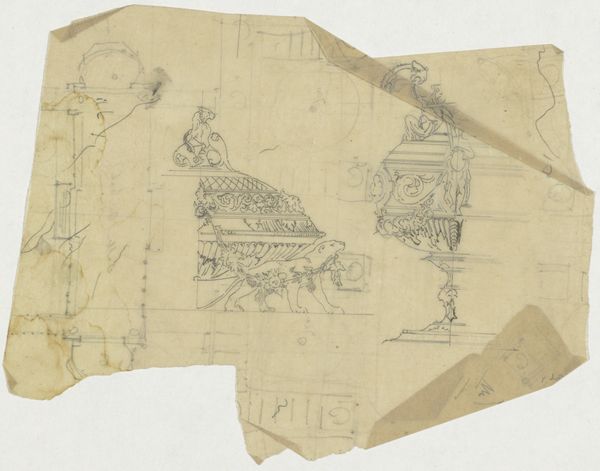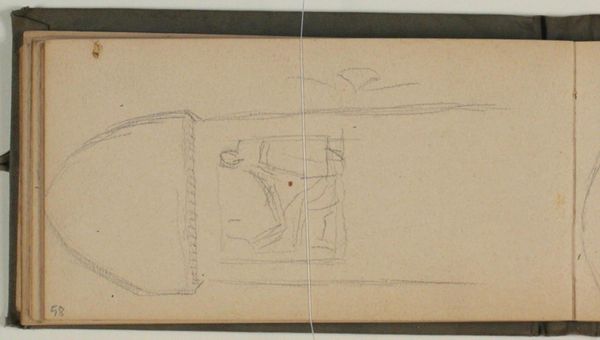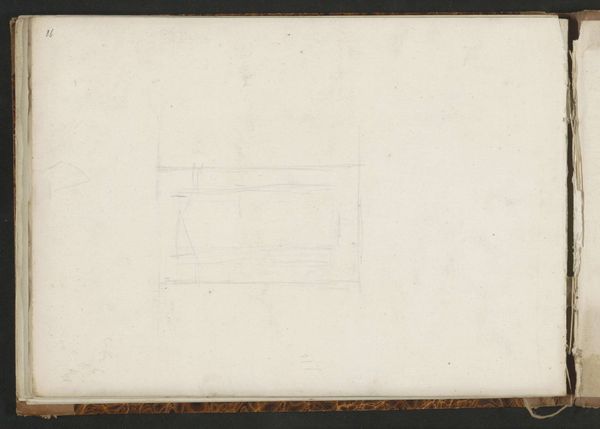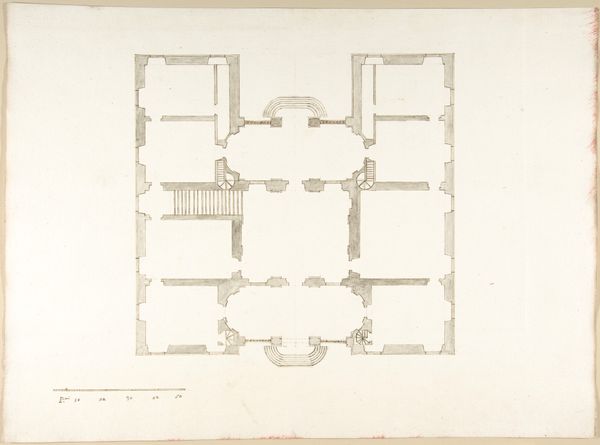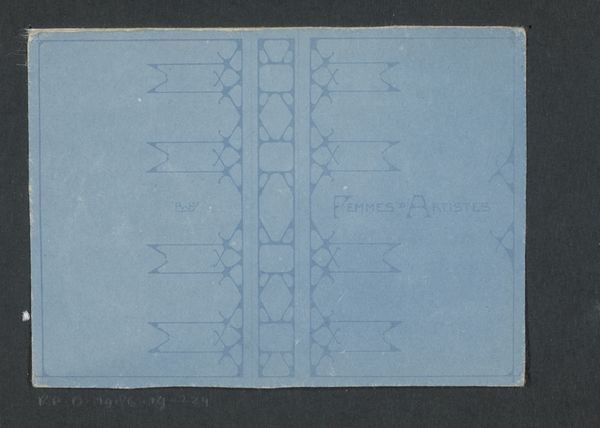
drawing, print
#
drawing
# print
#
landscape
#
form
#
geometric
#
line
Copyright: Public Domain
Curator: This work, "Plan for a Grate," created anonymously between 1800 and 1900, strikes me as something that focuses on the raw process of creation. You see the geometry; how line and form communicate a blueprint for an object of municipal infrastructure, right? Editor: It's deceptively simple, isn't it? At first glance, the diagram is almost brutal, yet its geometric starkness is suggestive. How do we view functional drawings that weren't intended as “art”? The grate becomes something of an aesthetic object in its own right. Curator: Precisely! What materials would have been available, what were the means of production during this time? Were these crafted individually or mass-produced in any sense? This connects directly to labor, the people behind constructing city infrastructures. The "how" becomes paramount. Editor: Yes, and what did urban space mean at that moment? A grate exists at the intersection of the city's surface and its unseen underbelly. This raises all kinds of issues. It is about urbanism, social structures and power—who benefits from these spaces and who is marginalized by them? What identities are made visible, and which are hidden from view? Curator: Good questions. Was it built to standardize components and construction—offering stability, durability, and the control of material cost. We can examine its geometric layout: that becomes not just art, but the study of its impact of economic resources, access, distribution across different social levels within 19th century urban life. Editor: And the labor that goes into building that infrastructure, who laid those paving stones, built the sewers? Who saw that the trash didn't build up to unhealthy levels? Consider what narratives are pushed to the periphery, whose existence is forgotten or glossed over in favor of celebrating technological "progress". Curator: It reveals an almost anonymous devotion in designing infrastructure—highlighting a level of technical execution with limited resources. Editor: That dedication should spark dialogue concerning inequality and progress in its time, inviting audiences to view overlooked infrastructures and forgotten hands behind municipal advancements. Curator: Ultimately, this challenges our notions of skill. I hadn’t really considered the design or geometry involved in drainage before. Editor: It certainly inspires consideration and is evidence that beauty exists where we don’t always think to look.
Comments
No comments
Be the first to comment and join the conversation on the ultimate creative platform.
